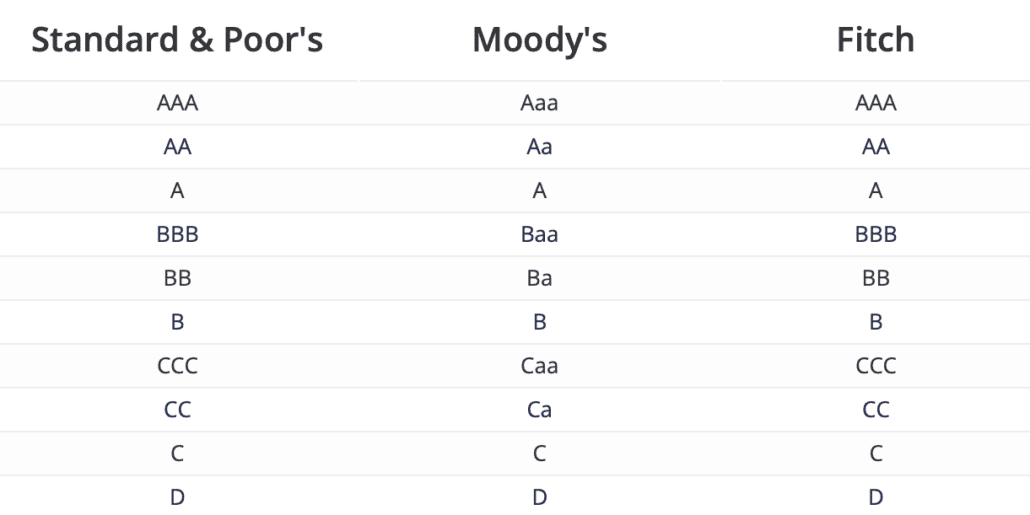Credit ratings
Credit ratings provide information on the creditworthiness of a company or country. These rating are important because they indicate the likelihood of default, i.e. the probability that the issuer will be unable to repay the money borrowed. The default probability in turn to a large extent determines the required interest rate on issued bonds needed to attract investors. Credit ratings, both for long- and short-term ratings, are provided by rating agencies. The three most well-known rating agencies are Standard & Poor’s (S&P), Moody’s and Fitch Ratings.
Ratings used by rating agencies
The following table provides an overview of the long-term issuer credit rating symbols used by the three major credit rating agencies. Standard & Poor’s and Fitch Ratings apply similar reporting standards. Both can also provide a negative, stable, or positive outlook next to the credit ratings. At a first glance, Moody’s seems to report somewhat different ratings. However, the ratings are in fact very similar. Additionally, Moody’s uses the values 1, 2, and 3 – with 1 being the best and 3 the worst – to make a further distinction in creditworthiness: Baa1 or Baa2.
Both the credit rating methodologies as well as the exact interpretation of the symbols vary across the rating agencies. In general, bonds with a BBB rating or higher are considered ‘investment grade’. Bonds with BB (‘double B’) or lower are categorized as high yield bonds (or (‘junk’).
Summary
Credit ratings indicate the probability of default of an issuer. The better the rating is, the more attractive the interest rate or the institution.

